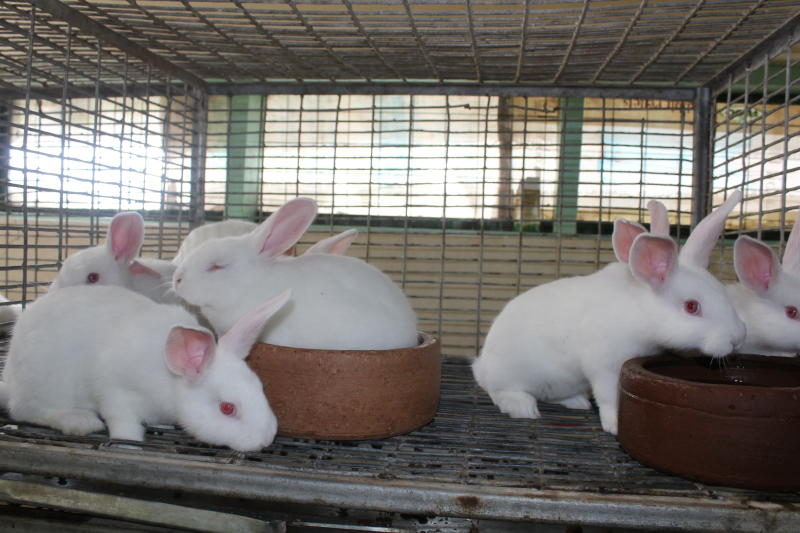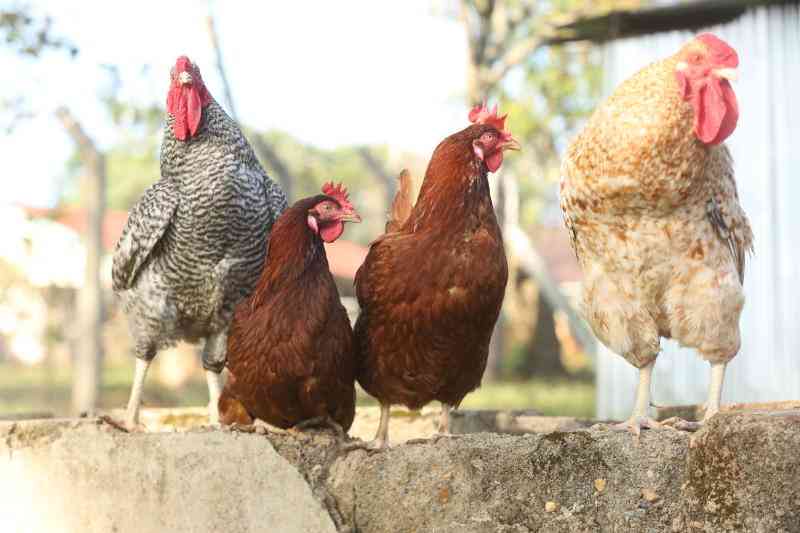

In Kenya, most people start rabbit farming on a past time basis or as a hobby. But it is possible to run a successful commercial rabbit agribusiness. A good number have embraced commercial farming with varying success, myself included. So what does it take to run a successful rabbit farm?
First, research on the firms that sell rabbits for breeding. There are many breeds of rabbits reared for various reasons like the skin or pelt, urine, for research purposes or as a pet.
For a good foundation stock, you need a supplier who is an expert in breeding. Avoid briefcase rabbit breeders who do not have any rabbit farm.
Quality meat
The rabbit breed should have a nice meat to bone ratio so that it can produce rabbits that have the desired meat volumes.




Be careful not to acquire a breed that has been cross-bred too much without much regard to the benefits of cross breeding rabbitslike production of higher meat bone ratio and resistance to diseases. Many local breeds are cross bred this way.
A rabbit breeder locally cost between Sh3,000-6,000 and the average number of rabbit bunnies per mother is 3-8 every two months.
Training
The second most important stage is acquiring rabbit farming training.
Most local firms that offer contract farming of rabbits serve the rabbit mothers before selling to farmers. You can also learn to do this if you are not interested in contract farming.
After the females give birth, the basic care for the bunnies is keeping them warm and ensuring the mother breast feeds them. This is what you learn at the training areas as a new farmer. This is the most crucial stage of rabbit farming that determines success or failure.
Housing
Next crucial area is the rabbit structures. Rabbit cages are simple since they are storeyed and occupy relatively small space. They should however be built to certain specifications to allow maximum stretching and movement for the adult rabbits and growing ones.
All rabbit cages should be accessible easily by the farmer without struggle. This way, one avoids any injuries on themselves or the animals.
Stay informed. Subscribe to our newsletter
When putting up a rabbit farm, the farmer should essentially put up a four-section farm. It should comprise of the normal regular cages measuring 3 feet length, 2.5 feet width and 2.5 feet height.
A space measuring double size otherwise referred to as long rooms which are 6 feet length, 2.5 feet by 2.5 feet height each.
The materials used for building depends on the farmer and location of farm. A farmer in Mombasa County given the heat for instance, will ensure maximum open space when building the cages while one in Limuru will ensure cold does not adversely affect her rabbits by using materials that will keep them warm. Getting the housing right is so fundamental, any mistake at this stage can result in deaths.
Always face the cages away from the direction of wind and rain and on flat surface. Building a barn around the farm is advisable to avoid theft and adverse effects of wind and rain. Iron sheets and makuti are locally available materials that farmers can use for building barns around their rabbit farms.
The recent hike in timber prices due to scarcity has occasioned higher expenses in building rabbit cages.
To overcome that hurdle, use a friendly PVC coated mesh on the floor of all rabbit housing to make the rabbit comfortable and avoid bruising below the legs as this could cause disease causing germs. Cement the floor of the barn to keep away fleas and other pests. This also makes cleaning the cages easy.
The farm also needs a quarantined cages to keep sick and injured rabbits, to minimise spread of diseases.
A pharmacy where to keep veterinary drugs and feed additives and supplements is also crucial. Farmers reserve a cage or two for this purpose.
[The writer is a Cunipreneur and CEO of ALCARE Kenya Ltd, a rabbit breeding and contracting firm. A social science graduate of Kenyatta University, [email protected]]
[email protected]]